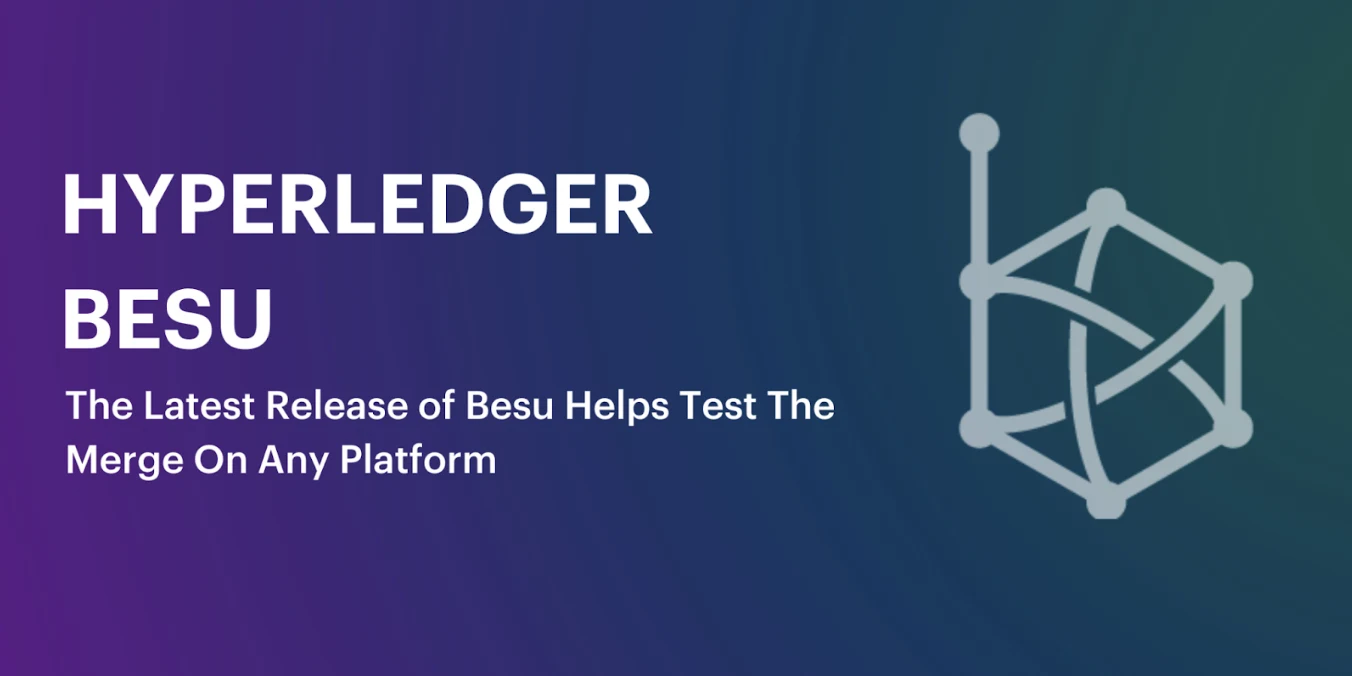Hyperledger Besu has released version 22.4.2 to help test the Merge on any platform. This update brings native Hyperledger Besu support for Intel x86 on Mac, Linux, Windows, Mac M1, and Linux ARM 64. Native support for the various cryptographic libraries within Besu means less configuration challenges and more performance for users on different platforms.
We are eager to get Hyperledger Besu in the hands of stakers with hardware that they can test in anticipation for the Merge. Stakers using Intel x86 on Mac, Linux, Windows, Mac M1 ARM64, and Linux ARM 64 can also take advantage of crypto native libraries that are compiled for performance. The rest of the dependencies leverage the Java code within Hyperledger Besu.
We are happy to share positive results on low-powered devices using ARM and will continue to optimize these platforms for individual and institutional stakers who wish to participate in the Ethereum network without requiring an expensive set-up and - thanks to Proof of Stake - without costly GPUs.
Technical specs required by platform
Below are the minimum specs for Hyperledger Besu on each platform and we recommend using a dedicated machine or VM with these specs:
Platform | Minimum Spec | Recommended Spec |
|---|---|---|
Intel x86 | 2-core CPU, 8GB RAM | 4-core CPU, 16-32GB RAM |
We strongly encourage you to use the recommended specs. Consensus clients are lighter, but not free. If you are planning on running a consensus client alongside Hyperledger Besu, you will need additional overhead.
Make sure you have the appropriate amount of storage on your machine. With Bonsai, our recommended storage format, you will need an order of ~650GB of storage for the blockchain data after a Snap sync at time of writing. Be sure to allot additional storage for your set-up as it runs and as the Ethereum world-state grows. Although Bonsai is designed to keep state bloat low and implicitly prune, we anticipate an order of 30GB state growth per month on mainnet using Bonsai. Always leave room on your box for the consensus-layer client which currently uses the order of 50GB.
Get started staking and testing the Merge
With the provided specs in mind, you can follow the Hyperledger Besu Developer Quickstart Guide to build and deploy Hyperledger Besu. Eth-Docker also has great guides on how to quickly deploy and test with just Docker images here. If you want to stake, but don’t have 32 ETH to spare, you can follow this guide to get setup with RocketPool.
Let us know how your staking set-up is going! Make sure to take advantage of Bonsai Tries to keep storage requirements low and to have your machine stay lean over time with zero pruning and low state bloat. Reach out to us on Discord and Twitter to share your results and provide your feedback to our team.
Want to get involved in #TestingTheMerge? Try out your setup on the Ropsten testnet. Happy Staking!
